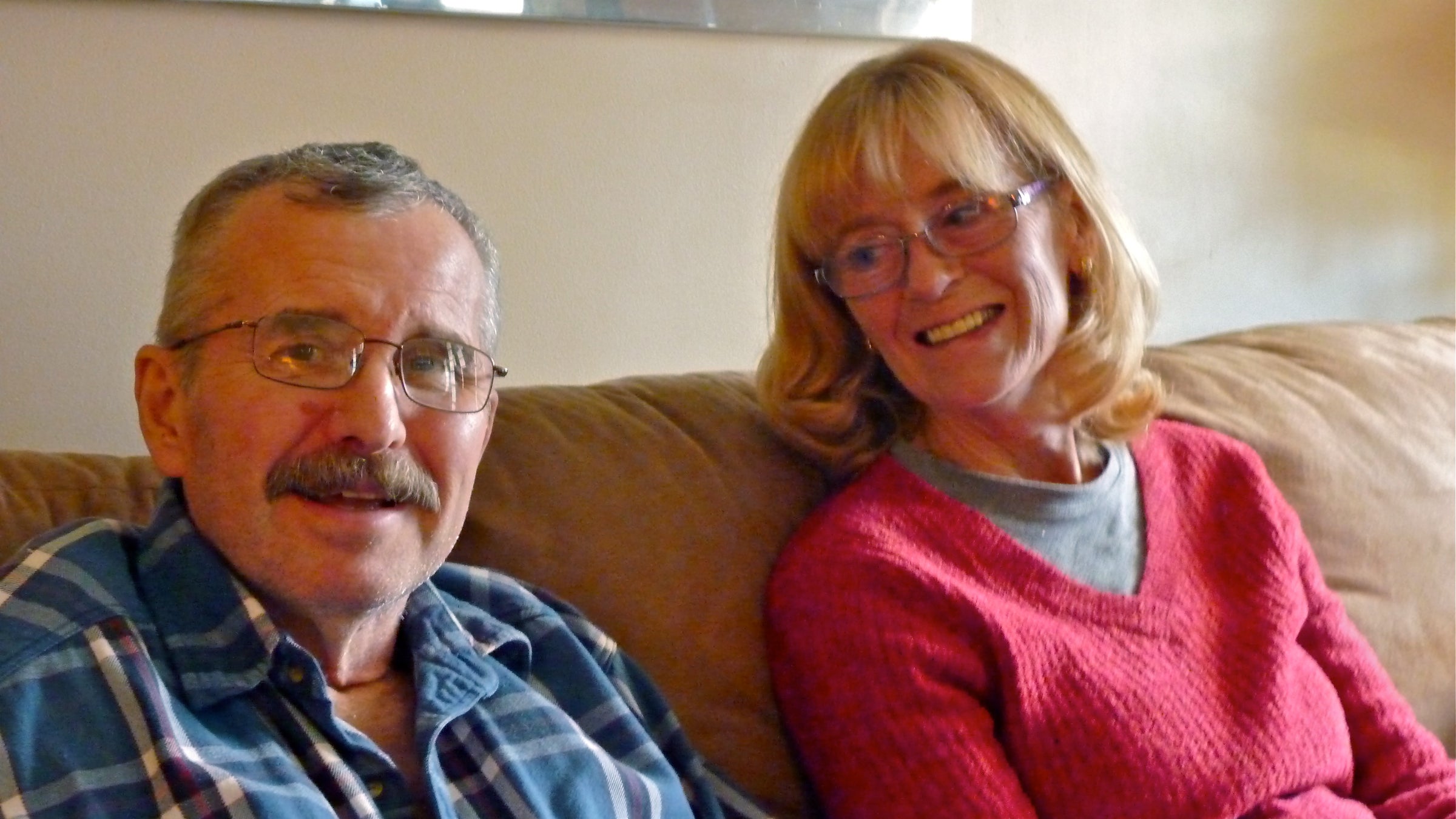Heart attack survivors can thank technology and time
Listen
John Bilkins
Machines might save you if you have a heart attack, but technology isn’t solely responsible for the dramatic decrease in cardiac-related deaths.
Starting last year and continuing into the spring, John Bilkins found himself often struggling to catch his breath. The panting on May 8 was something different, though. Gasping for air, he thought about driving himself to the doctor, but changed course and called for an ambulance.
“Last thing I remember is sitting on the edge of a gurney in the ER, trying to catch my breath, and then I was out. That was that.”
The 65-year-old retired firefighter from East Falls was in the midst of a massive heart attack. He was sent to Temple University Hospital’s cardiac catheterization lab, where he received angioplasty and four stents. He remained unconscious for the next seven days. His wife Lois granted permission for a necessary quadruple bypass, and the implantation of a left ventricular assist device.
“It’s an implanted pump that does the work of the left ventricle,” explained Lois. “The left ventricle is what pumps the oxygenated blood through the rest of the body.”
The LVAD serves as a bridge, assisting Bilkins’ heart until it gets stronger. The device, which sits just below the heart, is powered by rechargeable battery packs John wears around his waist. A power cord snakes out of his abdomen.
“It is truly amazing. It’s life giving and life saving, and without it,” added Lois, “I’d have been a widow.”
A golden age In cardiac care?
Doctors told Lois Bilkins that ten years ago, the technologies that saved her husband’s life did not exist. Go back 60 years, and the medicine seems primitive.
“Oh, in the 1950s, most people felt you got a heart attack because you had hardening of the arteries and the arteries got all sludge in them and finally blocked up and then you had damage to your heart,” says Dr. Alphonse Edmundowicz.
Now retired, he graduated from medical school in 1955, and spent four decades in cardiac care.
“The feeling there was to put a person to bedrest, and we would sedate them heavily. We’d keep them comfortable, and maybe give them oxygen, and intravenous things. But no serious treatment,” he says.
And as you’d expect, the results weren’t all that good.
A generation later, the field is unrecognizable.
“So, I became a card-carrying cardiologist in 1996,” says Daniel Edmundowicz, Alphonse’s son, and Chief of Cardiology at Temple University Hospital. In Dan’s world, sludge can be overcome. His team has the cutting-edge cath lab where John Bilkins was treated with angioplasty. There’s drug-releasing stents, clot busters, advancements in bypass methods and robotic surgical systems.
“There is no doubt that the technology that allows us to restore flow to the heart muscle has saved lives,” says Edmundowicz. “No doubt about it.”
Turning a battleship
The statistics for heart attack survival are stunning. Between 1999 and 2011, the mortality rate for patients who were admitted to a hospital dropped 27.5 percent nationwide. For every 100 heart attacks, 86 people now survive at least 30 days following the event. But there’s some debate about whether or not the technology is really making the difference.
Yale School of Medicine’s Harlan Krumholz, who co-authored the study, is of the opinion it wasn’t necessarily new technology that moved the needle, “but better application of old knowledge that really led us, I believe, to really make these gains.”
While the effectiveness of stents, angioplasty, and implantable devices has improved recently, Krumholz points out, it’s not like they were invented in just the last 15 years. There was no single radical improvement in care; no vaccine or drug that accounts for such a huge drop in mortality. Instead, Krumholz says it’s all about a focus on quality. Hospitals nationwide finally began getting on board with proven steps in cardiac care that for decades were being ignored.
“There were places in the country [in the 90s] where only a third of the patients were getting beta blockers, even though we know they are highly effective in reducing the risk of dying after a heart attack,” says Krumholz.
“In some areas of the country, only about half the people were getting aspirin, even though we knew that to be a highly effective medication.”
If aspirin was known to be beneficial dating back to at least the early 1980s, what took so long? There’s no clear answer, but one likely reason is hospitals are big, complicated institutions, and change can just take time. So to try to jump start the process, groups began publishing data on how often medical facilities followed so-called “best practices.”
Erik Muther is with the Pennsylvania Health Care Quality Alliance, which publishes, among other stats, what percent of the time an individual hospital administers aspirin to patients having heart attacks. Throw a little sunlight on the issue and suddenly everyone falls into line.
“No big surprise there,” says Muther. “Institutions and medical professionals are just naturally competitive folks. So that helps to move things along quite substantially.”
That competition is what helps spur innovation, and leads to the next generation of devices and drugs. But in the race to save lives following a heart attack, it appears some of the best medicine may already be out there.
WHYY is your source for fact-based, in-depth journalism and information. As a nonprofit organization, we rely on financial support from readers like you. Please give today.



